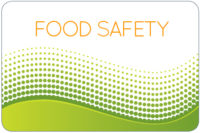FDA highlights best practices on food safety for online delivery services
Consumers are increasingly ordering food from a variety of online retailers.
.jpg?1743090466)
The U.S. Food and Drug Administration (FDA), in coordination with the U.S. Department of Agriculture and the Centers for Disease Control and Prevention, collaborated with the Conference for Food Protection (CFP) to release food safety best practices for third-party delivery services. These recommendations focus on key parameters companies should consider when delivering food to consumers.
Addressing the safety of foods ordered online and delivered directly to consumers is a priority outlined in the New Era of Smarter Food Safety blueprint. Consumers are increasingly ordering food from a variety of online retailers, including produce and meal-kit subscription services, ghost kitchens (which only prepare and fulfill orders for delivery, without a physical storefront) and third-party delivery services and programs. The best practices document identifies mitigating measures to potential food safety vulnerabilities, including those that may arise in the “last mile” of delivery.
This document provides food safety best practices that include preventive controls, mechanisms to assess risk, recommendations for proper packaging, temperature control, physical and chemical contamination control and allergen control.
CFP, a non-profit organization created in 1971, provides a formal process for the food industry, state and local health departments, academia and consumer organizations to submit input in the development and/or modification of recommended national retail food safety policy, which is incorporated into state, local, tribal and territorial food safety laws and regulations upon adoption of the FDA Food Code. CFP also identifies and addresses emerging problems associated with food safety.
This collaboration is one example of how the FDA, in its New Era of Smarter Food Safety, is engaging with both industry and all stakeholders to help ensure food safety as new business models emerge and change to meet the needs of the modern consumer.
Another example is the three-day public meeting the FDA held in October 2021 to discuss the safety of foods ordered online and delivered directly to consumers. The response showed that this is an issue that crosses age, economic and national divides. More than 4,000 people registered to attend, and 15,400 watched online.
Additional information:
Sources: U.S. Food and Drug Administration (FDA); USDA; USDA FSIS; Centers for Disease Control and Prevention; Conference for Food Protection
Looking for a reprint of this article?
From high-res PDFs to custom plaques, order your copy today!




